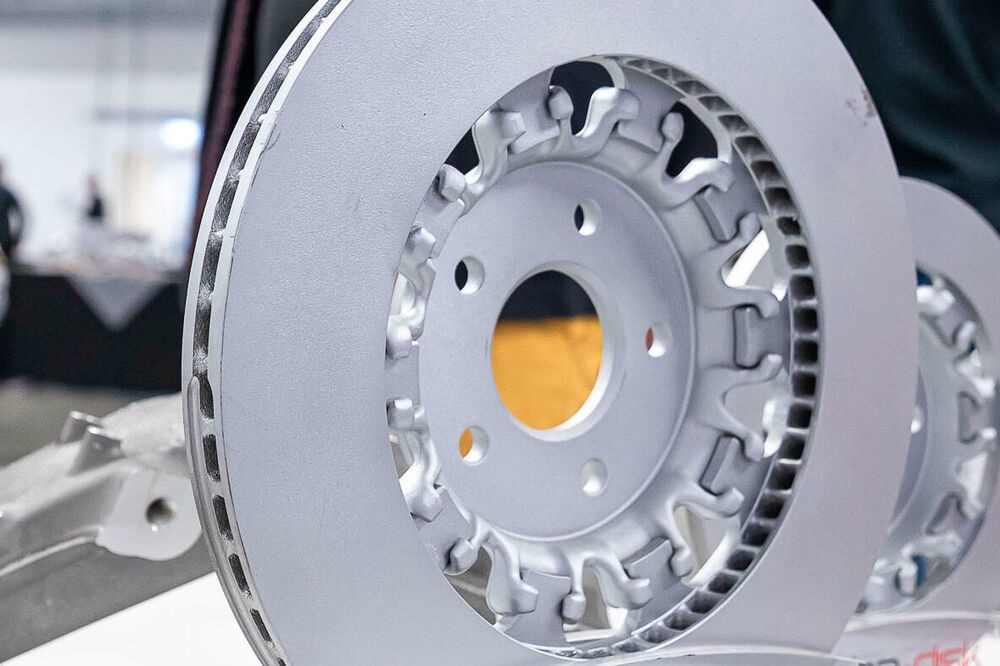Saint Jean Industries confer lighter brake disc made of Aluminium and cast iron at lightweight construction summit in Würzburg
Lightweight construction on the chassis has several advantages, as it improved driving dynamics, lower fuel consumption and greater driving comfort. In regards to that Saint Jean Industries presented a bi-material brake disc at the lightweight construction summit in Würzburg.

Two-part brake discs with a brake pot made of aluminium or sheet steel as well as a friction ring made of grey cast iron, ceramic or CFRP materials offer several advantages like slighter mass, higher braking performance and load capacity, better NVH behaviour and heat dissipation. However, connecting the two components and materials is still a complex and costly undertaking. Saint Jean Industries has taken on this problem and, according to Patric Auner, Business Development Manager for Saint-Jean Industries in Germany found a cost-effective solution suitable for series production.
Saint Jean has generated the know-how for the innovation known as “Cobadisk” in countless series projects with cast parts for the body, chassis and battery-electric drive systems. At Cobadisk, Saint Jean manufactures the aluminium brake cup using the Cobapress process; this includes casting and drop forging plus post-processing. At the same time, the partner Lingotes in Spain produces the one-piece grey cast iron friction ring with pin geometry integrated on the inner ring.

The brake pot and friction ring are then allied in a patented process in the joint venture. To do this, both components are first heated and then the “arms” of the brake cup are frictionally flanged around the connecting bolts on the inner radius of the grey cast iron friction ring. This process is fully automated and should take less than 20 seconds. The system is then finished and coated with an anti-corrosion layer.
Due to the radial arrangement of the connecting parts, the thermal expansion of the materials should, according to Auner, only lead to low component stresses and the frictional connection should be maintained. Grey cast iron and aluminium components should consist of standard alloys and be able to be manufactured and processed using known processes. But friction rings made of ceramic or carbon are also compatible with this connection technology.
Compared to a conventional grey cast iron brake, Saint Jean can save between one and two kilograms per brake with its concept. The exact value also depends on the vehicle size; in principle, “Cobadisk” can be represented for vehicles from the A to the sports car segment.
Auner reports that Saint Jean is currently involved in pilot projects with three premium OEMs from Europe. The general suitability for series production has already been demonstrated in various test bench tests. For example, Saint Jean tested the Cobadisk in dynamic test bench brake tests at a top speed of 250 km/hour and successively increasing braking forces of 2,000 to 7,500 Newton meters over a simulated total distance of 6,000 kilometres. After that, no cracks or other damage were found.
In another test scenario, Cobadisk without a corrosion protection layer was subjected to a service life test with OEM-standardized fatigue, corrosion and thermal shock tests several times. The reference vehicle was a two-ton SUV that completed driving profiles at a top speed of 260 km/h and was exposed to various environmental conditions. According to Patric Auner, there was no damage to the friction ring or brake cup, nor were any traces of corrosion to be seen.
This news is also available on our App 'AlCircle News' Android | iOS
























